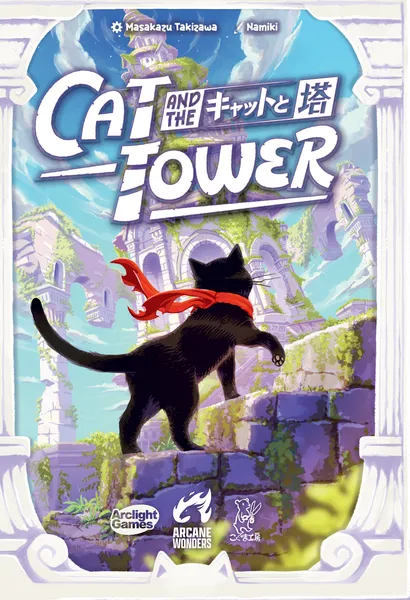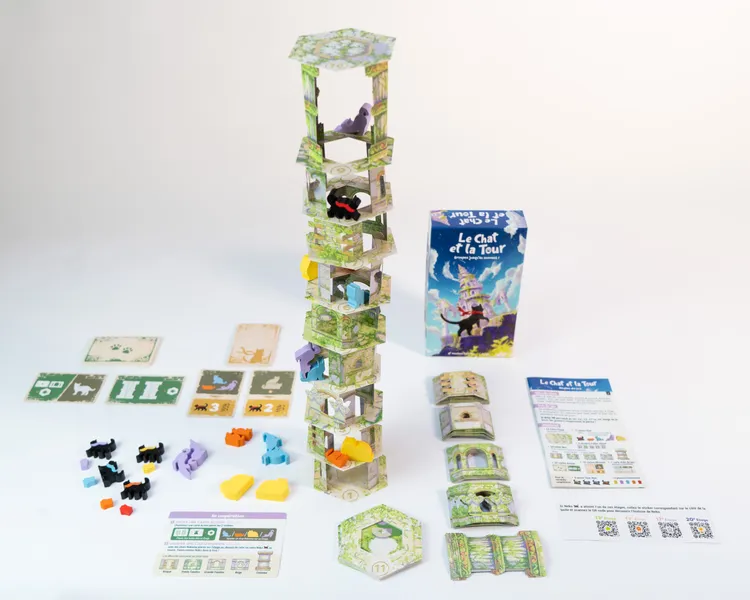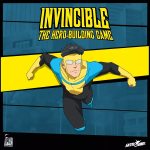
- Designer: Masazaku Takizawa
- Publisher: Arclight
- Players: 1-5
- Age: 6+
- Time: 30 minutes
The world of tabletop games is full of stacking challenges. Few, however, blend a heart-tugging story with tense dexterity mechanics like Cat and the Tower. This cooperative game originated with Arclight Games in Japan. Players work together to help Toto the cat climb a tall structure. He needs to reach the stars to reunite with his mother. Do not let the charming theme fool you. This is a tough test of spatial skill, teamwork, and, most importantly, steady hands.
We spent several sessions trying to lift Toto to his goal, and this review will explore why this particular cat and tower game is stacking up as a must-try for cooperative game enthusiasts, and exactly how it uses its unique design to justify its spot on your shelf.
Scaling the Heights: Gameplay & Mechanics of Cat and the Tower

At its heart, Cat and the Tower is a cooperative dexterity stacking game, but it avoids the pitfalls of its overly simple cousins by introducing a crucial element of enforced decision-making: the Action Card system.
The goal is deceptively simple: successfully stack floor and wall tiles up to the 10th floor to clear the first stage of Toto’s journey. What complicates this is the constant interplay between building and balancing.
- The Action Card Dilemma: Each turn, players choose from a limited selection of face-up Action Cards. These cards dictate what you must place—often combinations of floor tiles (which must be placed numerically) and varying heights of wall tiles. Crucially, the card draw introduces immense variability and challenge. You might find yourself stuck with action choices that force you to place extremely mismatched walls, making the platform above immediately precarious. This is where the game excels; it’s less about perfect physical precision and more about strategic spatial planning under pressure. The game consistently asks, “How do we make the best of this terrible placement option?”
- Mission Fulfillment: As you successfully build, you complete Mission Cards (like placing a specific number of tiles or balancing three Feline Friends). Fulfilling a mission allows Toto to climb a few floors himself, granting the team progress towards the 10-story goal. This is a brilliant mechanism that links the physical dexterity challenge directly to the narrative goal, turning the construction into a rewarding, rather than simply punishing, task.
If five or more wall tiles have tumbled off during the game, you lose. This puts a tangible, finite limit on the number of mistakes your team can afford, keeping the tension high from the moment you lay down the first floor tile.
The Feline Factor: Why This Cat and Tower Game is More Than Just Jenga

While the stacking is the main event, the components and theme elevate the experience. The pieces are chunky and high-quality, giving them a satisfying “table presence.” However, the stars of the show are the little wooden Feline Friends.
These cats, which players must place on the tower as part of certain actions, are more than just cute decorations; they are dynamic, mobile balancing weights. Strategically moving these cute cats is often the only way to re-center the gravity of the structure and prevent an inevitable collapse caused by your previous, ill-fated action card choice.
The game is a masterclass in cooperative physics:
We found the key to long-term success was less about brute force balance and more about micro-adjustments using the Feline Friends to counteract an uneven stack. When a tower reaches the 8th floor and starts to lean like the tower in Pisa, a tiny wooden cat can be the difference between victory and watching your hard work crash down in a frustrating, tile-scattering heap.
If you want to know the component specifics and exact ruleset, check out the official Cat and the Tower BoardGameGeek page. It has community discussions and weight ratings.
A Personal Gauntlet: The Verdict for Cat and the Tower Enthusiasts

So, who is this tense cat and tower challenge actually for?
If your gaming group thrives on tense, shared moments where a misplaced finger can lead to communal disaster (and subsequent, good-natured shouting), this game will be a hit. It requires focus, communication, and a willingness to accept that sometimes, the luck of the draw forces you into an unstable corner.
However, much like any dexterity game, it is not for the faint of heart. If you suffer from “stacking anxiety” or just despise games where physical skills trump strategy, this might be a frustrating experience. The tension is palpable, especially as the tower approaches the 10-floor checkpoint.
What makes Cat and the Tower stand out is the emotional investment the narrative provides. Helping Toto reach his goal feels genuinely meaningful. It transforms a simple physical test into a mini-adventure. It’s an ideal choice for a family board game night, offering a level of tactile engagement that digital games simply can’t match, even for players as young as six.
If you enjoy the combination of theme, strategic card play, and high-risk balancing, we highly recommend trying to guide Toto on his cooperative journey. To see more titles from the same publisher who brought this charming game to life, we recommend you [check out the publisher Arclight’s catalog].
Final Rating: Like It! (A truly unique cooperative experience, even if my hands were shaking the entire time.)

